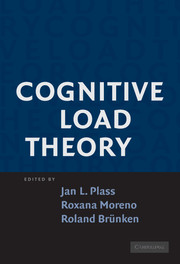Introduction
Published online by Cambridge University Press: 05 June 2012
Summary
What is Cognitive Load Theory (CLT)? The objective of CLT is to predict learning outcomes by taking into consideration the capabilities and limitations of the human cognitive architecture. The theory can be applied to a broad range of learning environments because it links the design characteristics of learning materials to principles of human information processing. CLT is guided by the idea that the design of effective learning scenarios has to be based on our knowledge about how the human mind works. Starting from this premise, different processes of knowledge acquisition and understanding are described in terms of their demands on the human cognitive system, which is seen as an active, limited-capacity information processing system. Taking into account the demands on cognitive resources induced by the complexity of the information to be learned, the way in which the instruction is presented to the learner, and the learner's prior experience and knowledge, CLT aims to predict what makes learning successful and how learning can be effectively supported by teaching and instruction.
Because of its applicability for a broad range of instructional materials, including Web-based and multimedia instruction, CLT is a frequently discussed concept in educational psychology and applied learning sciences. A growing body of empirical research has become available in recent years that describes the relationships among human cognitive architecture, the design of educational materials, and successful learning.
- Type
- Chapter
- Information
- Cognitive Load Theory , pp. 1 - 6Publisher: Cambridge University PressPrint publication year: 2010



